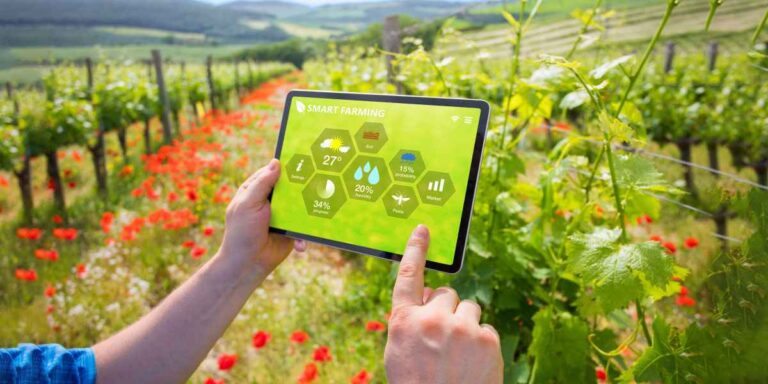Young women can gain a strong foundation in computer programming and acquire skills that will be beneficial in the future by enrolling in programs that are specifically tailored for them. There are coding classes offered with an emphasis on women. Additionally, these courses might provide students with a sense of self-assurance in their technological expertise, which might inspire female students to look for work in traditionally male-dominated fields. Consider the study of computers, for example. Enrolling in courses like Learning Fuze’s web development bootcamps is one of the many various approaches to address this issue. There are numerous options available. You can learn web programming in a relaxed environment and at your own pace with the help of this program, which is open to people of either gender and is available to everyone.
Women’s Induction Into the Field
There is still a sizable gender disparity in the field of information technology, even though women make up more than half of the global population. In reality, women make up only a little over 20% of the workforce worldwide in the technology industry. Over the past few years, there has been a sluggish but steady rise in the number of women working in technology, but the pace of change is still far too slow.
For many complex causes, there aren’t enough women working in technical fields. There is still a sizable gender gap in the STEM professions when it comes to available educational opportunities and job options. Women frequently have fewer possibilities to pursue jobs in technology and are more likely to encounter bias and discrimination at work. As for sexual harassment at work, women are more likely than men to encounter it. There are many reasons why women are underrepresented in positions of authority, and this is only one of them.
Achieving Equal Voice for Young Women
However, there is still a slim chance of success. A variety of projects and organizations aim to support women working in the technology sector, where an increasing number of women are succeeding. If we have better access to opportunities and support, we can get closer to achieving our goal of narrowing the gender gap in technology.
A list of well-known organizations whose main objective is to encourage young women to study computer programming is provided below:
On a national level, a nonprofit organization by the name of Girls Who Code is working to close the gender gap in technology.
Women in technology are a group of women who work in the information technology industry globally.
She++ is an organization that helps women enhance their careers in technology by providing them with mentoring and training opportunities.
Calling Young Women Into the Tech Field
Google’s Made with Code program encourages young women to get interested in computer science and programming. The program’s main goal is to increase the number of young women who choose to work in these fields.
In an effort to pique the interest of as many people as possible, especially young women, in computer programming, Code.org is promoting The Hour of Code throughout the world.
Given how dependent the world is on technological advancements, it is crucial that women have the chance to work in the technology industry. By encouraging more women to work in the technology sector, we can improve its forward-thinking and inventiveness, which will be to everyone’s advantage.
Individuals of any age are now invited to participate in one of the many different coding schools, and women of all ages are encouraged to do so. A variety of camps and after-school programs are available for younger girls to learn the fundamentals of computer programming. These programs are targeted at women. Older women have the option of enrolling in more difficult courses, including ones on app development and web programming, among other things.
A girl who participates in a program that teaches her to code may develop abilities that will be useful to her in the future, regardless of how old she is or how much experience she has previously. Girls who take part in these seminars will not only feel more ready to enter the profession and be more competitive in a variety of industries, but they will also be more self-assured in their abilities to pursue any career path they choose.
The Computing Industry Employs Women
Despite the common misconception that men predominate in the world of computing, many women do, in fact, work with computers. This defies the widespread assumption that men rule the sector. Contrary to what most people believe, this is true. In actuality, women have made important contributions to the field of computers because it was still in its early stages. The fact that this is the case is not surprising. In actuality, they have aided in a number of the most important technological developments in recorded human history.
Ada Lovelace was one of the first women to work in the computer industry, and she later became well-known as one of the industry’s key figures. Ada Lovelace was one of the first women to work in the computer industry. The English mathematician Ada Lovelace is credited with developing the first computer algorithm in recorded history. Lovelace was born in 1815 and passed away in 1852. Lovelace entered the world in 1815, the year of his birth. In the early years of the field of computer design, she made contributions that were quite significant.
Two more notable women in the field of computers are Jean Sammet, who helped create COBOL, a programming language that is widely used in the commercial world, and Grace Hopper, who created one of the first programming languages. Grace Hopper was responsible for creating one of the earliest programming languages. Jean Sammet assisted in the creation of COBOL. One of the earliest computer programming languages was created by Grace Hopper. Jean Sammet made a significant contribution to the development of the COBOL programming language. These ladies opened the way for future women to pursue professions in computers by imitating them and blazing their own paths. They were innovators in their industry. Other women followed in the footsteps of these women who blazed the way.
Women in Computer Industry Positions
From the development of software to the management of computer systems, women are today actively involved in every facet of the computing industry. Women are making particular strides in the following industries: Throughout history, there has never been a lot of female participation in many academic professions. In actuality, there are now a sizable number of people who identify as a female working in the field of computers. Even if there is still an opportunity for further expansion in this field, the number of working women in the computer industry is growing quickly.
If working with computers is something that interests you, you shouldn’t let the common perception that men are more likely to thrive in this industry deter you from doing so. In this sector, there are a lot of doors that could open for women, and both men and women have the potential to thrive.
Young women with interest in technology careers have access to a variety of tools and services that could help them accomplish their goals. Despite what might appear to be a barrier, businesses like Learning Fuze that offer learning opportunities like the ones you can access by clicking here are assisting in lowering the obstacles that prevent women from regularly working in the field of technology and computer information.


